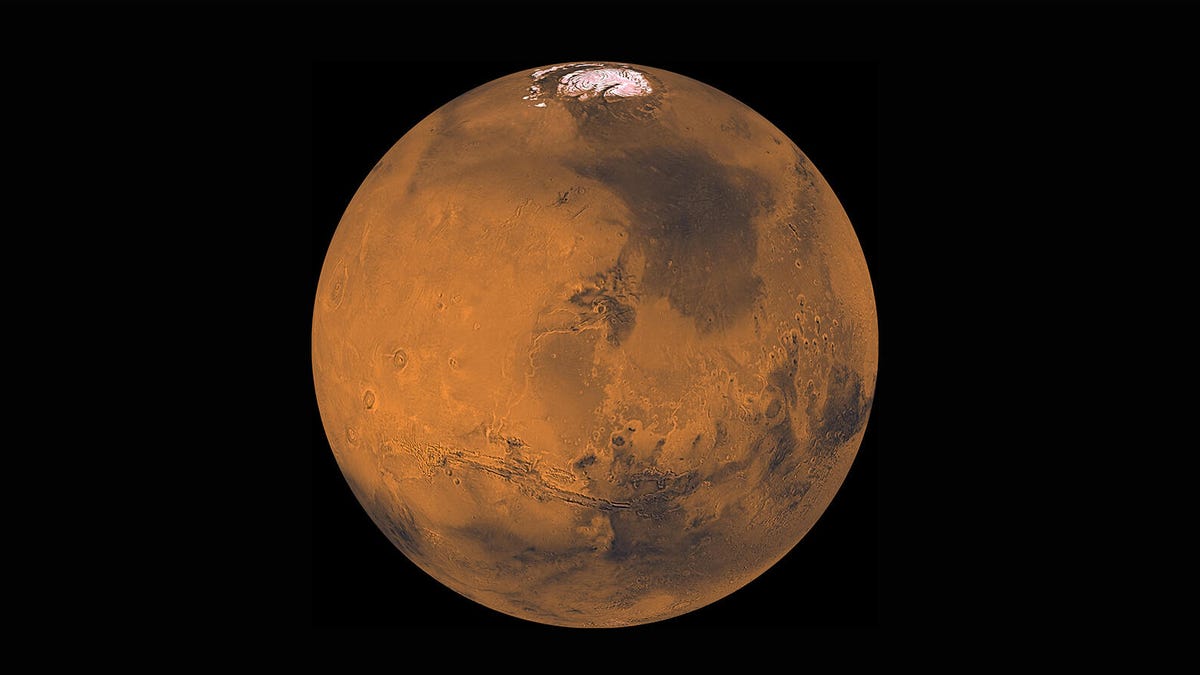Frozen Mars? Ancient valleys show planet may have been covered in ice
Glaciers may have covered Mars southern highlands over 3.5 billion years ago.

Scientists think Mars may have been more icy than previously believed.
Mars, 2020: Cold, dusty and, except for a growing cadre of robotic explorers, not particularly lively. Today, the planet's southern highlands are crisscrossed by deep valleys, surface features believed to have formed by ancient rivers and oceans. But new research suggests the valleys may have formed underneath glaciers, strengthening the idea our planetary neighbor was partly frozen in its formative years.
The study, published in the journal Nature Geoscience on Monday, suggests that ancient Mars may not have been warm and wet as planetary scientists have previously suggested. Instead, the Mars of old was partly frozen over in the south, with large ice sheets occurring in the south. The new hypothesis is based on an analysis of over 10,000 different valleys from 66 different valley networks.
"Since Mars's valleys were first discovered, the assumption was that rivers once flowed on Mars, eroding and originating all of these valleys," said Anna Grau Galofre, a planetary scientist at Arizona State University and first author on the study, in a press release.
The valleys had been previously imaged using instruments aboard NASA's Mars Global Surveyor spacecraft and the European Space Agency's Mars Express, and their characteristics such as length, width and angles were measured by the research team. Valleys are generally carved into a planet by water -- the constant force of H2O grinds away at the soil and sediment, eventually creating huge rifts -- but this can happen in a number of ways. Rivers and streams, yes, but also underneath glaciers, where the water melts away into channels.
Analyzing a valley's features provides geologists with a fingerprint. The research team looked at these geological fingerprints in Mars' valleys and compared them to similar valleys on Earth. They found that some were most certainly formed by rivers and streams, as previous research had shown.
However, they found evidence that many of the valleys likely formed underneath glaciers -- ice sheets -- where water would run off and carve out channels in the planet's surface.
The Devon ice cap in northern Canada.
"These results are the first evidence for extensive subglacial erosion driven by channelized meltwater drainage beneath an ancient ice sheet on Mars," said Mark Jellinek, a geoscientist at the University of British Columbia and co-author on the study.
Grau Galofre's work shows some of the valleys and channels found on Mars resemble those seen in Earth's polar regions, such as the Devon ice cap in northern Canada. The idea that Mars may have been, at least partially, frozen some 4 billion years ago has been predicted by climate modeling, but the existence of valleys and channels carved by rivers was at odds with the theory.
Now the new modelling performed by Grau Galofre and team has upended those old beliefs and helped solidify the idea the red planet was likely a little white, in its earlier years.
"Using the geomorphology of Mars' surface to rigorously reconstruct the character and evolution of the planet in a statistically meaningful way is, frankly, revolutionary," said Jellinek.
With Earth in various states of ruin, stargazers might feel a little jealous about the robotic explorers that have fled en masse to Mars. In the last month, three missions launched to the red planet: the UAE's Hope probe, China's Tianwen-1 mission and NASA's Perseverance rover. The latter two missions will search for signs of ancient life, probing the sediment in ancient lake beds for the telltale signs of alien existence. If glacial sheets did cover the planet, as Grau Galofre's team believes, life may have found a way to pull itself together in the earliest days of the planet.

